Learn how to live longer and reverse aging symptoms and chronic diseases through lifestyle changes based on learnings from the famous Blue Zones, plus Blue Zones Recipes for Longevity.
There’s no underselling that one of our species’ greatest accomplishments in the last 100 years has been humanity’s increased life expectancy. Improved sanitation, education, and the wonders of modern medicine have done an amazing job at prolonging our individual lifespans. While the most vulnerable in society are taken care of better than ever, true longevity remains elusive, however. Centenarians have always been rare, across cultures and across time—so what’s their secret? It turns out to be all about our lifestyle—how we live every single day.
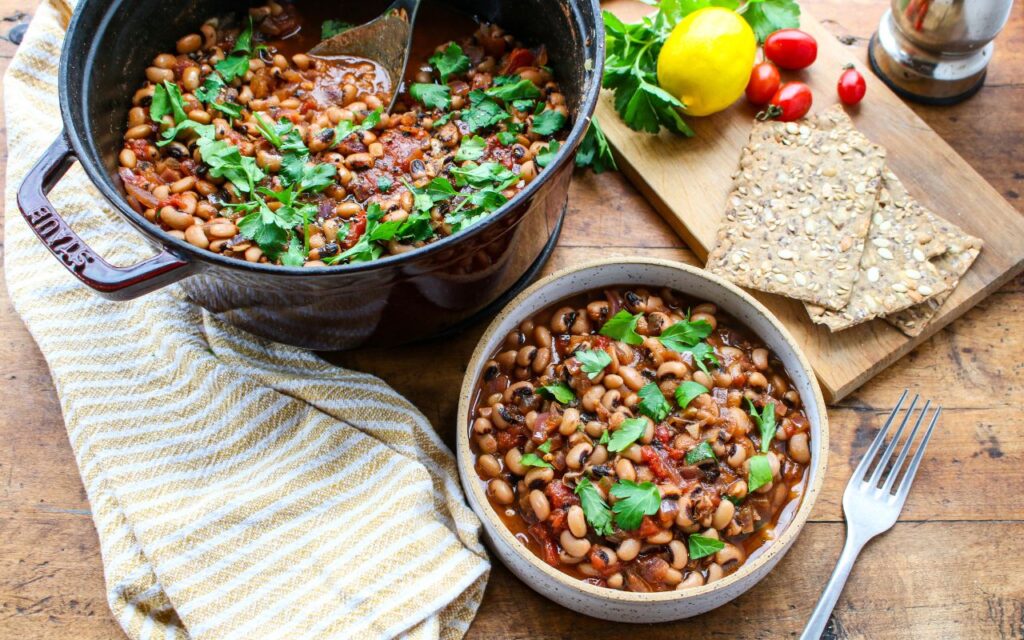
Discovering the Blue Zones
In 2004, National Geographic journalist Dan Buettner and his dedicated team traveled the world, seeking to discover communities wherein many of their members achieved that elusive goal of longevity: they identified five areas across the world which provided ideal environments for producing long-lived individuals, many of whom remained healthy and strong well into their elderly years. Dan and his team took out their pens and marked these spots in distinctive color— “Blue Zones”—and the rest is history. Each region houses a vibrant culture with strong ties to traditional lifeways, and though they may differ in certain philosophies, they are united by the key hallmarks of healthy living: regular exercise, strong and supportive interpersonal networks, and, of course, a diet based on plant-based foods. Want to dive deeper into Blue Zones? Check out their official site here. And read my interview with Dan Buettner here.
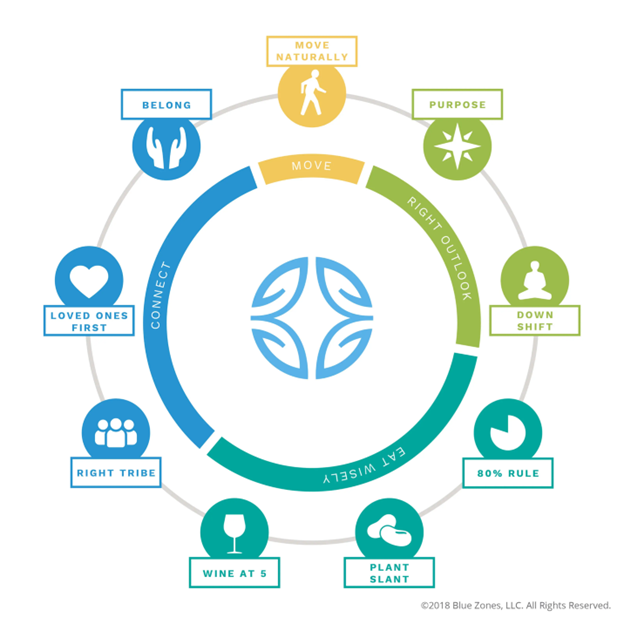
Power Nine—Reverse Engineering Aging
Buettner’s team identified nine characteristics of the Blue Zones lifestyle, pictured above:
- Move Naturally. Blue zone communities exercised naturally through gardening and walking to work.
- Purpose. Knowing your sense of purpose in life adds years to your life.
- Downshift. Reducing stress is an essential strategy for reducing inflammation.
- 80% Rule. Eating only until you feel 80% full is a healthful weight strategy.
- Plant Slant. Including more plant proteins is a cornerstone of centenarian diets—small portions of meat are eaten on average only five times per month.
- Wine at 5. With some exceptions, Blue Zones communities enjoy moderate, regular wine intake.
- Belong. Having a sense of belonging to a community, include faith-based programs, increase life expectancy.
- Loved Ones First. People who live longer have families that support them as they age.
- Right Tribe. A social network that supports a healthy lifestyle is an important longevity factor.
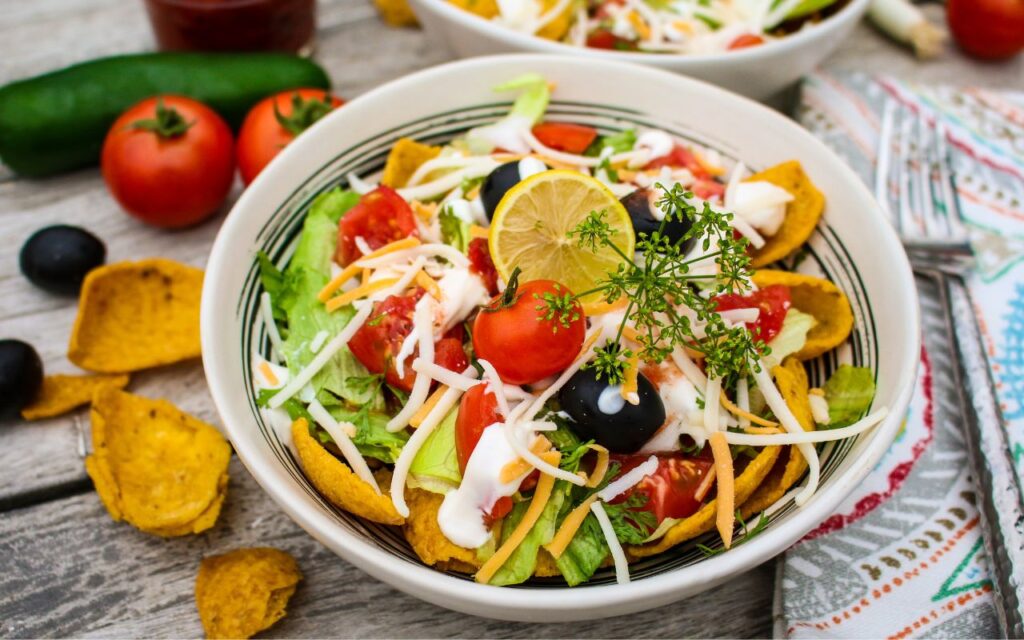
Blue Zone Communities
The five original Blue Zone communities were identified as:
- Loma Linda, United States
- Okinawa, Japan
- Nicoya, Costa Rica
- Sardinia, Italy
- Ikaria, Greece

Eating in the Blue Zones
As a plant-based dietitian and journalist, I have had the amazing opportunity to visit all of the Blue Zone locations. In fact, I lived in a Blue Zones community, having studied nutrition at Loma Linda University and residing in that community for several years. My parents practiced most of the nine rules (above) for longevity, and both lived healthfully until they were 89. I practice all nine of the rules for longevity in my own life, and have managed to stay very healthy (including fighting off a bout of cancer). That’s why I’m sharing my own personal insights into the five Blue Zones, as well as my favorite recipes from each region.
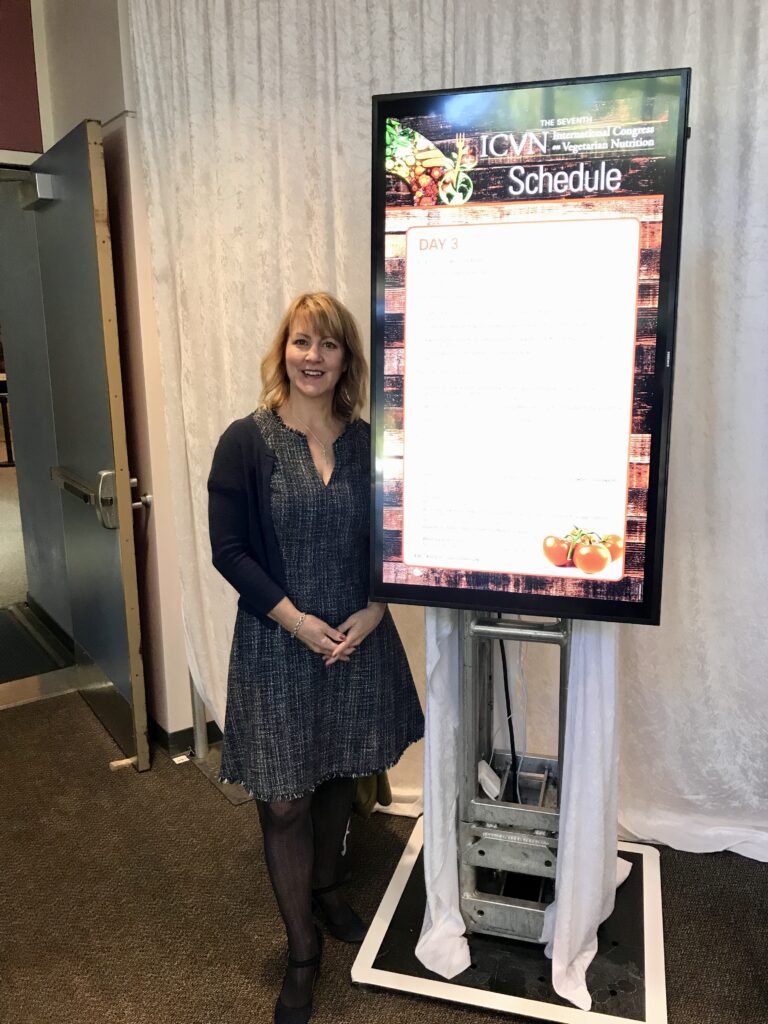
Loma Linda, United States
The only original Blue Zone identified in the U.S. was in Loma Linda, California, where I studied nutrition many years ago. When one typically thinks of healthy California living, certain imagery tends to spring to mind. One might imagine hiking in Northern California’s sprawling forests, an afternoon break in the rolling hills of its wine country, or an active lifestyle in a sunny SoCal beach town. Interestingly enough, the U.S.’s one and only blue zone is instead nestled deep within San Bernardino County, and it’s a community where many maintain a dedicated approach to healthy living. Loma Linda’s residents, many of whom adhere to the Seventh-Day Adventist faith, form a tight-knit community that places a large emphasis on vegetarian eating. The surrounding region’s many hiking trails and pristine wilderness definitely make it easier to live a holistically healthy lifestyle as well. For Loma Linda’s most health conscious, beans, nuts, greens, and whole grains are the foundation of healthy living. Learn more about the Loma Linda Blue Zones diet here.
Check out the following recipes inspired by Loma Linda’s Blue Zone:

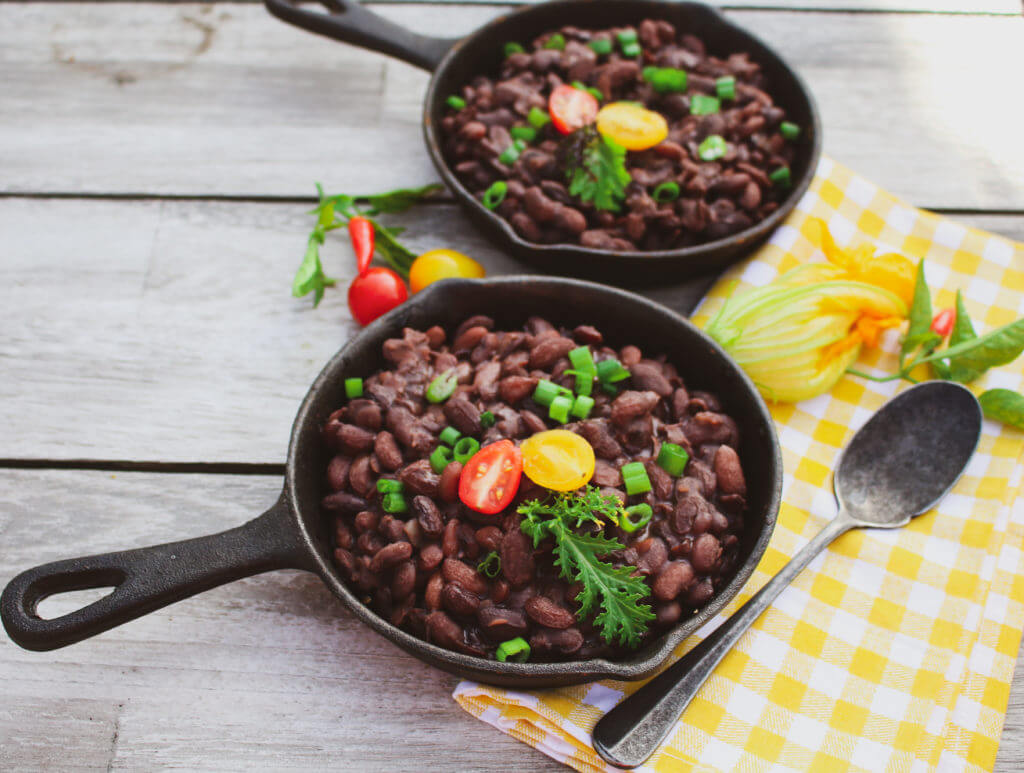

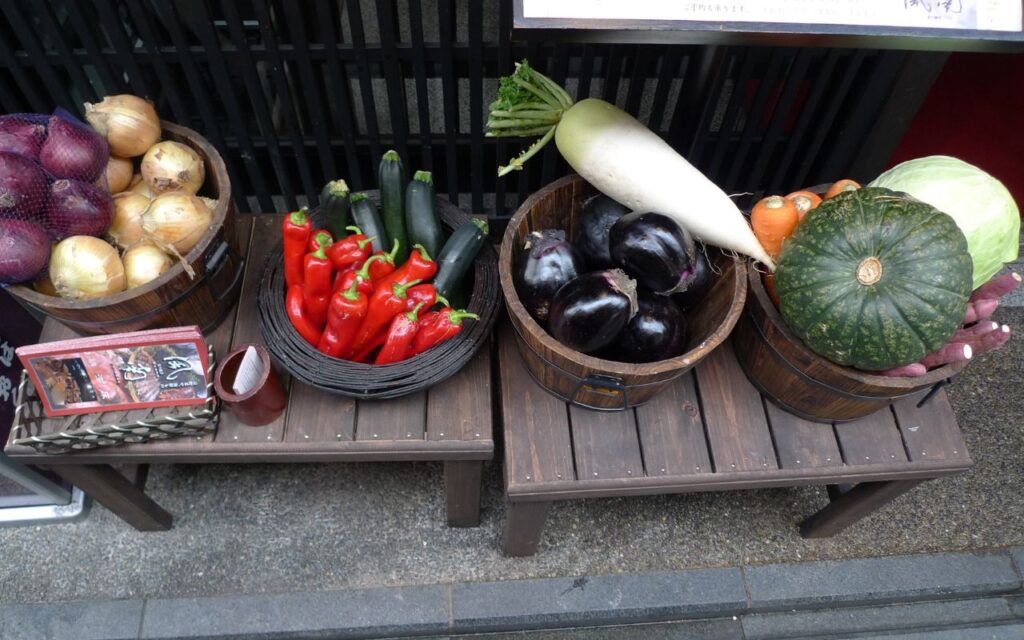
Okinawa, Japan
For a large part of its history, Okinawa was a part of a distinct territory, with its own language: the Ryukyu kingdom. To this day, Ryukyuans are fiercely proud of their heritage and traditional lifeways; naturally, this extends to their food culture. Okinawan longevity is world-renowned and a point of pride for its people. Even among the four other Blue Zones, Okinawans are notable for the quality of produce in their rich diets. Local superfoods like the vitamin-packed goya (Okinawan bitter melon) are the key ingredients to the Okinawan recipe for longevity. Another vegetable forms a huge bulk of the traditional Okinawan diet—It’s no secret that Okinawans love their sweet potatoes! According to bluezones.com, the Okinawan diet is composed of 67% sweet potatoes! You really can never get enough of them. For a beloved Okinawan favorite, why not try the most iconic Okinawan dish? Chanpurū is the name of their beloved vegetable stir-fry, often served with tofu. With its name coming from a loanword meaning “mixed”, it’s unsurprisingly a flexible dish—you could try Dan Buettner’s vegan version, or use bitter melon if you’re looking for that authentic touch.
Check out the following Japanese Blue Zones recipes here:
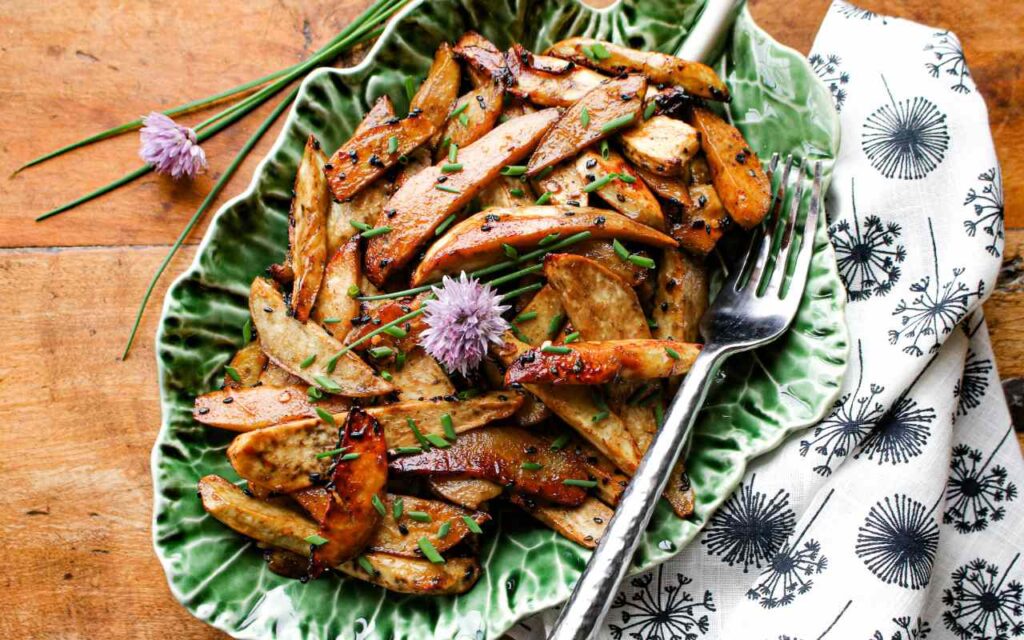



Nicoya, Costa Rica
On the beautiful blue Pacific shore of Costa Rica lies the Nicoya peninsula. The namesake for that peninsula is an old town in the heart of the territory. Consistent with other Blue Zones, the people of Nicoya live in communities that place high value on social capital and interpersonal relationships. The “three sisters”—corn, beans, and squash—are the staple trio that provided the backbone for traditional diets across the Americas, with Nicoya being no exception. These three “sisters” are synonymous with Mesoamerican diet, and have traditionally been planted together because they work incredibly well when farmed alongside one another. Check out the following recipes inspired by the Costa Rica Blue Zones.
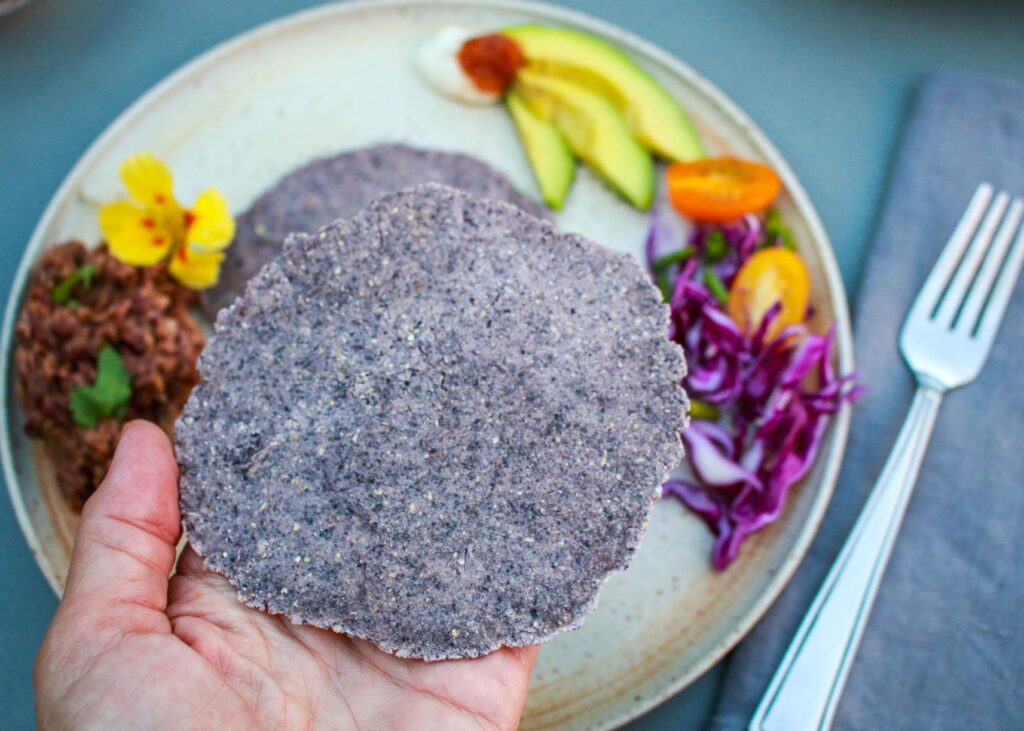
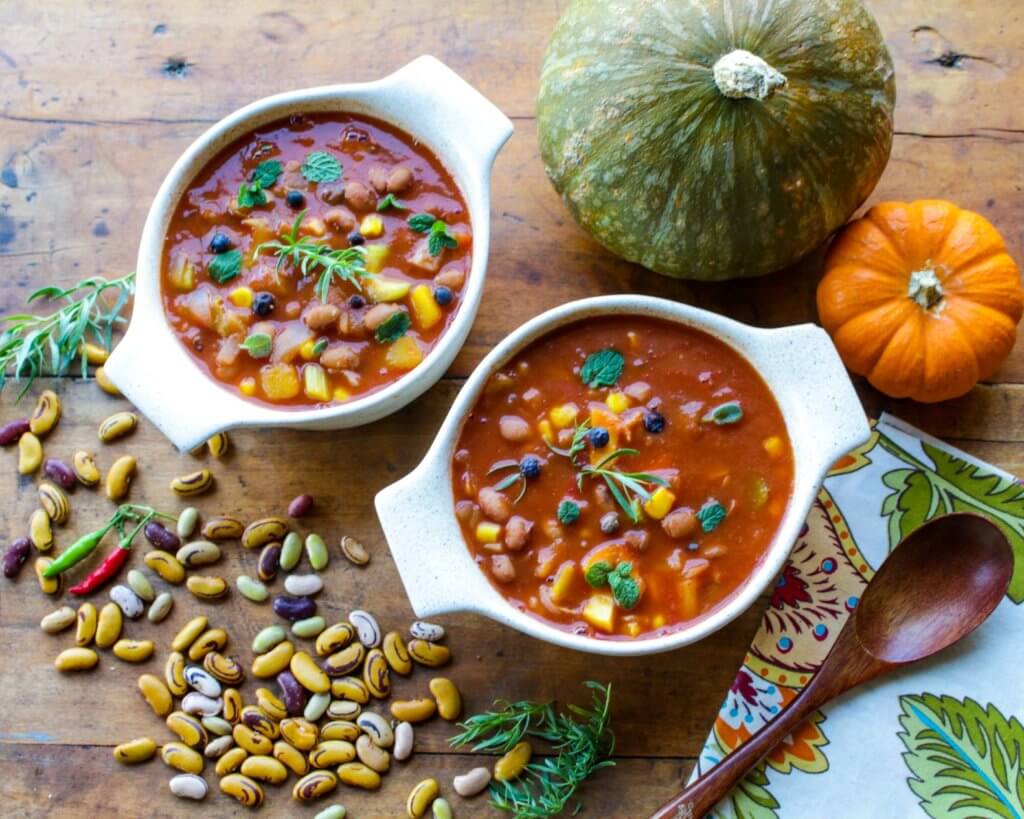
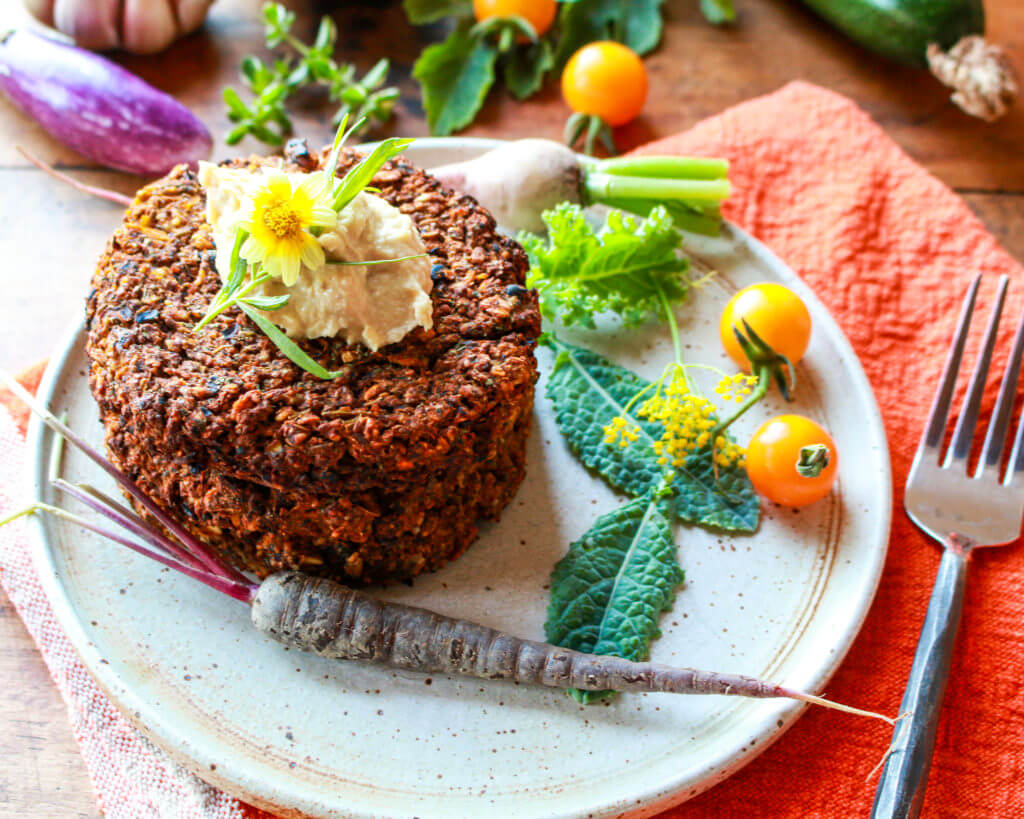
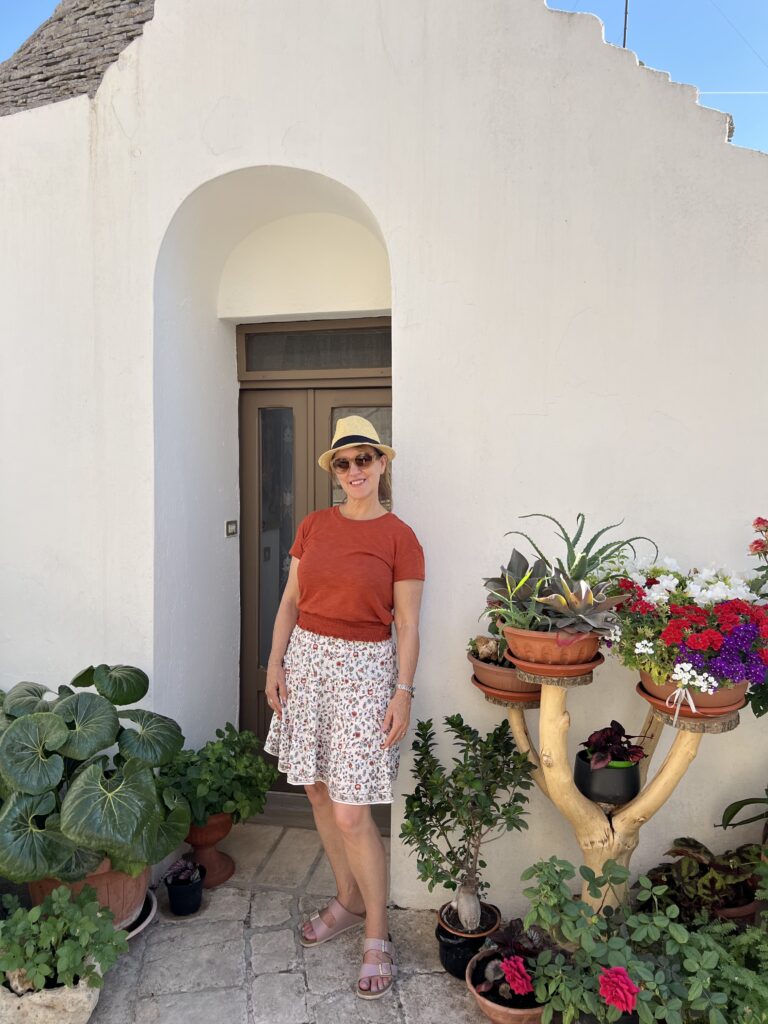
Sardinia, Italy
Even compared to the rest of Europe, Sardinia is notable for its complex archaeological record and its dedication to maintaining traditional ways of life. Though Italian is the main spoken language today, just like the case with Okinawa and Japan, Sardinia boasts a distinct traditional culture, and the Sardinian language is not a dialect of Italian, but another Romance language in its own right. For that reason, it’s no surprise that Sardinians are just as proud of their distinct culture and its ancient roots. In the Sardinian countryside, the pastoral life is still practiced with great care. Pasta, gnocchi, wines, bean vegetable soups, and breads are very traditional dishes in Sardinia. For a truly timeless dish, try Dan Buettner’s spin on a Sardinian flatbread that’s been eaten for millennia, and keeps extremely well: pane carasau. And check out some of my favorite recipes inspired by Sardinia, Italy.

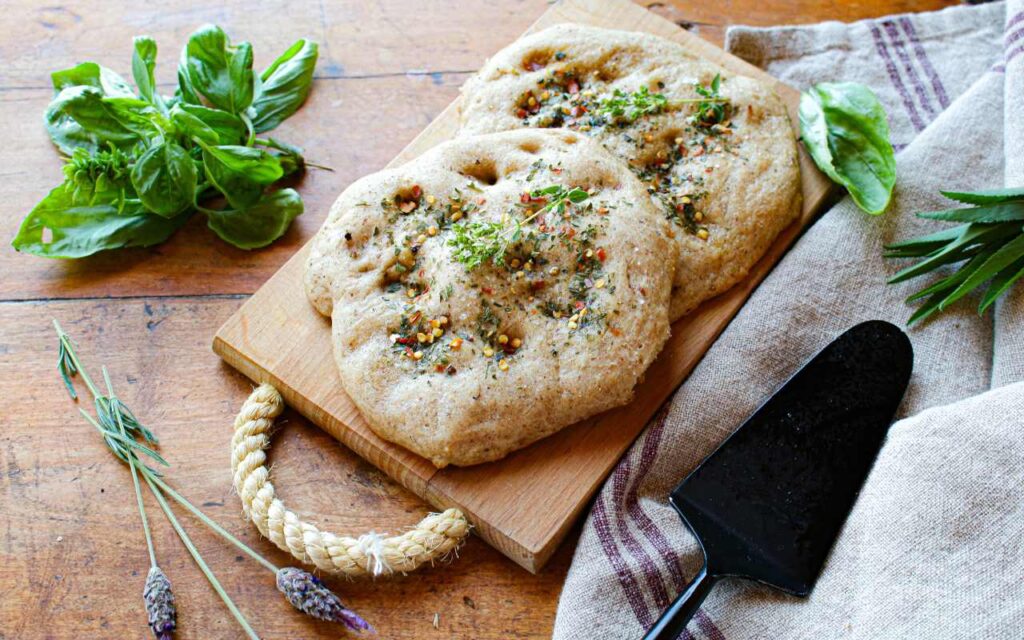

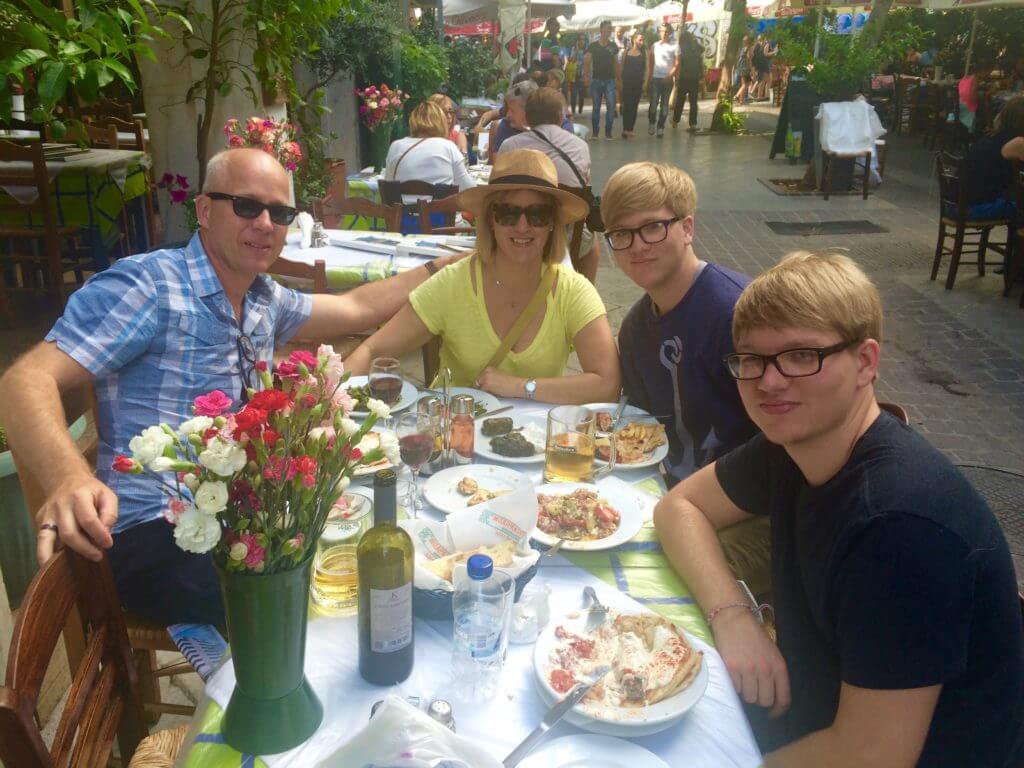
Ikaria, Greece
The final Blue Zone lies inconspicuously in the heart of the Aegean Sea. Ikaria is perched at a historical crossroads, but its nature as an island lends itself to the maintenance of its traditional cultural heritage. The island’s rough, rocky terrain keeps its residents active, even today. You don’t have to be health-obsessed to know of the Mediterranean diet’s unique benefits—the residents of Ikaria eat a varied and balanced diet based on Mediterranean staples: pulses, aromatic herbs, and dishes made with olive oil. The iconic dish of Ikaria is splendid and plant-based, and has gained fame throughout all of Greece. Whether you call it a casserole, a vegetable stew, or something else entirely, Soufiko is a summertime delight that is sure to please both heart and soul. Try this Blue zones recipe for Soufiko here. And check out some of my favorite Greek recipes:

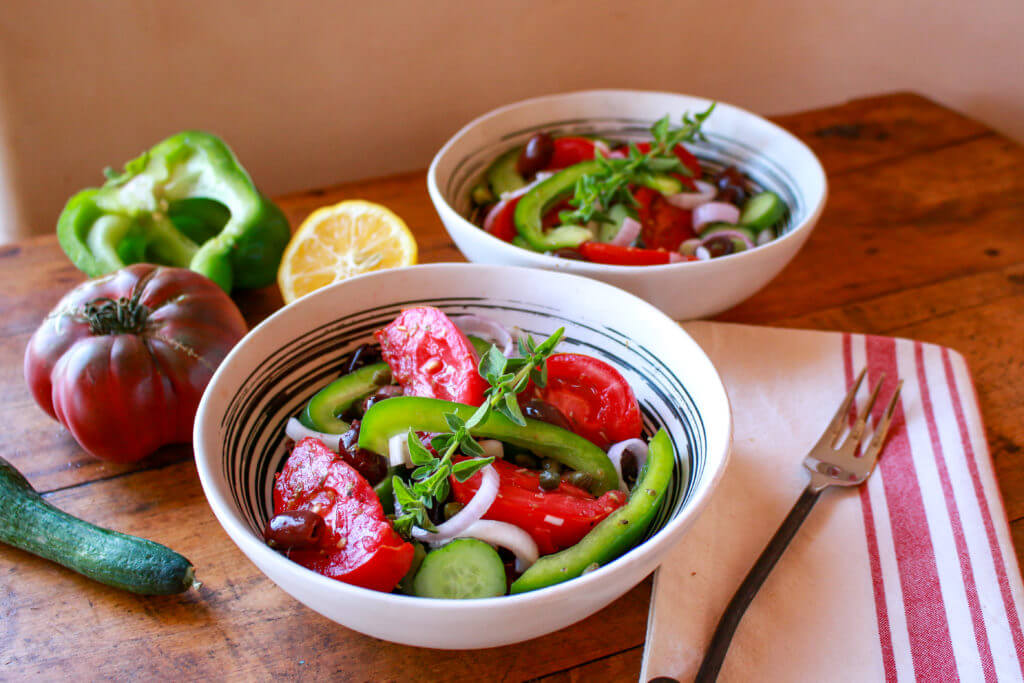

Written by John Caldas with Sharon Palmer
Photos by Sharon Palmer
For more information on plant-based diets around the world, check out:
More Tools for Eating and Living the Goodness

